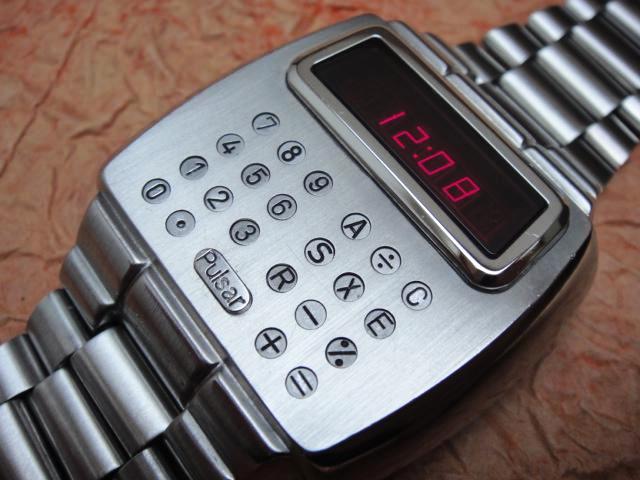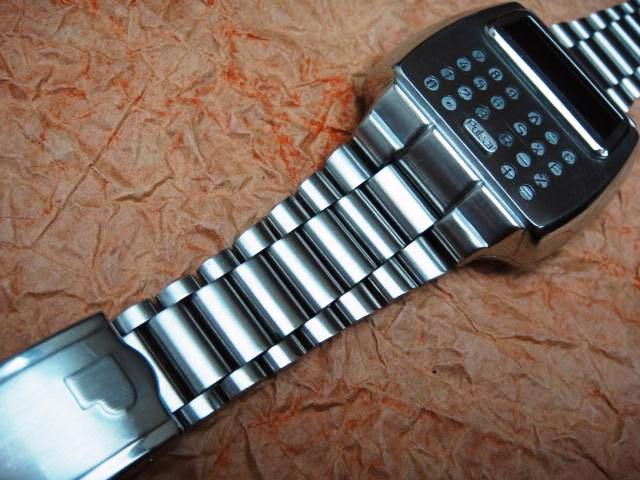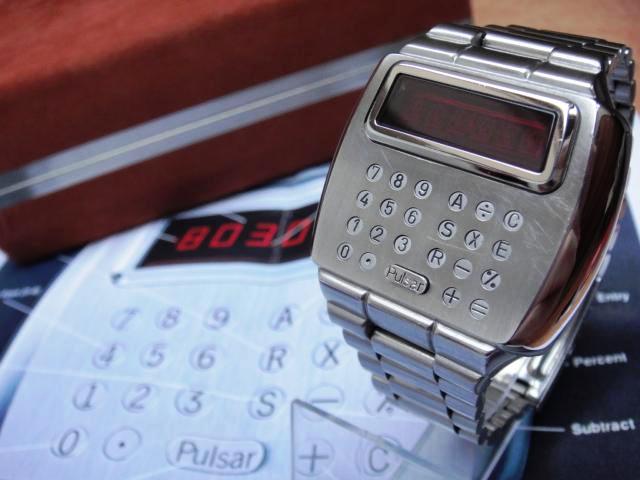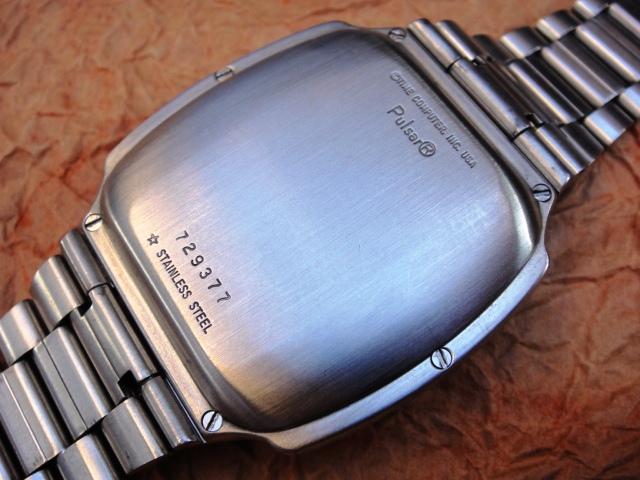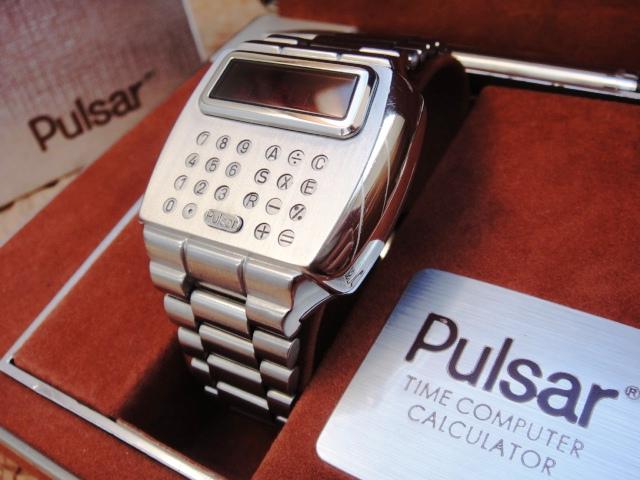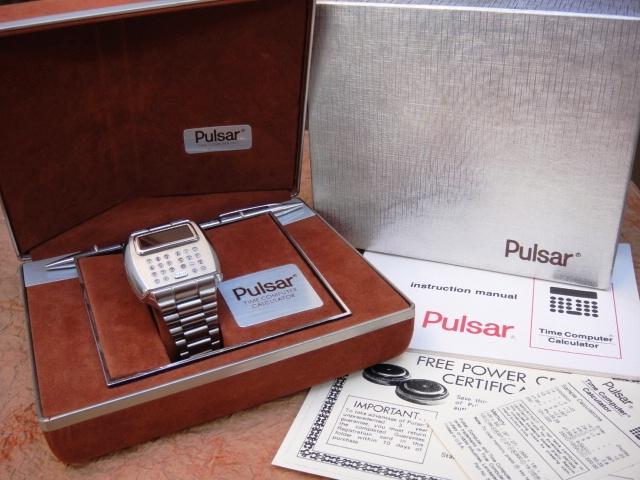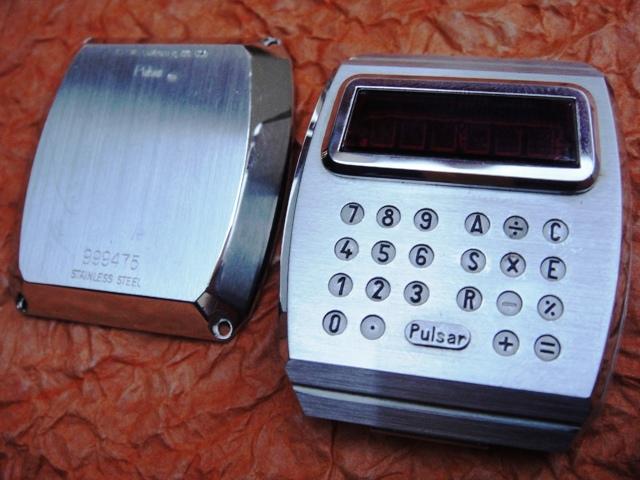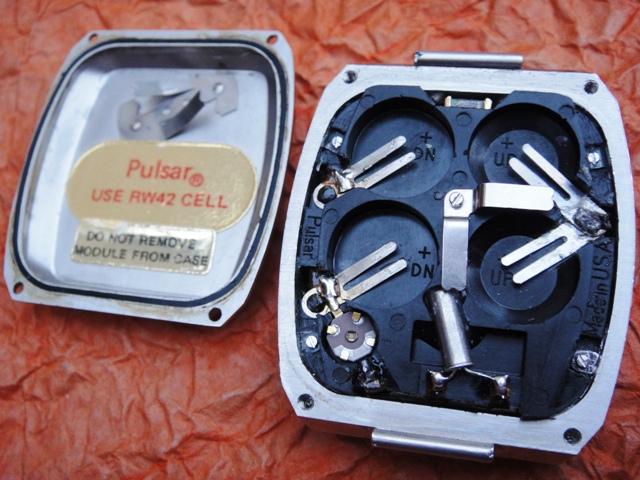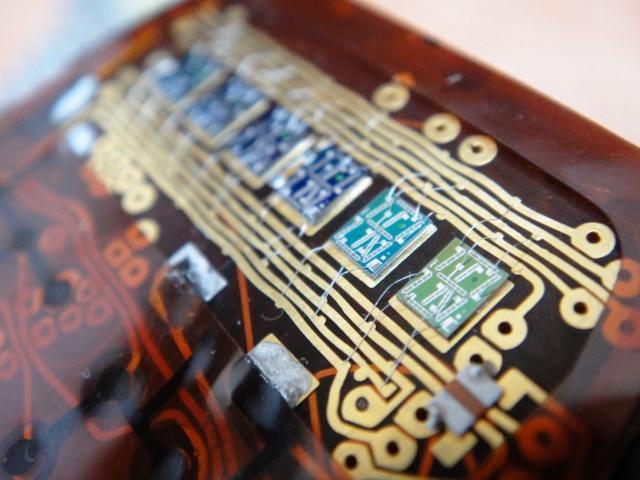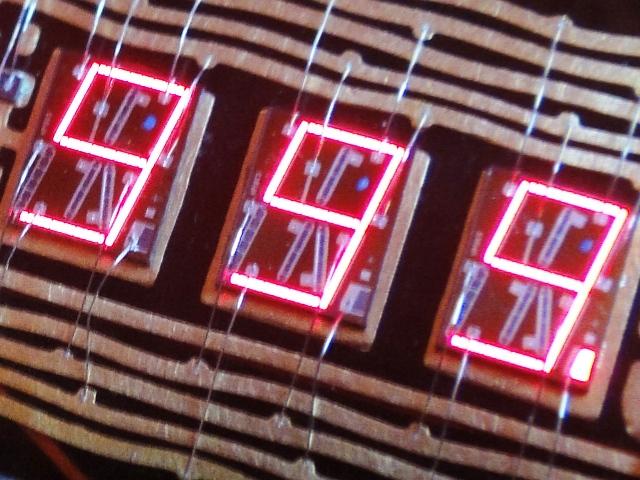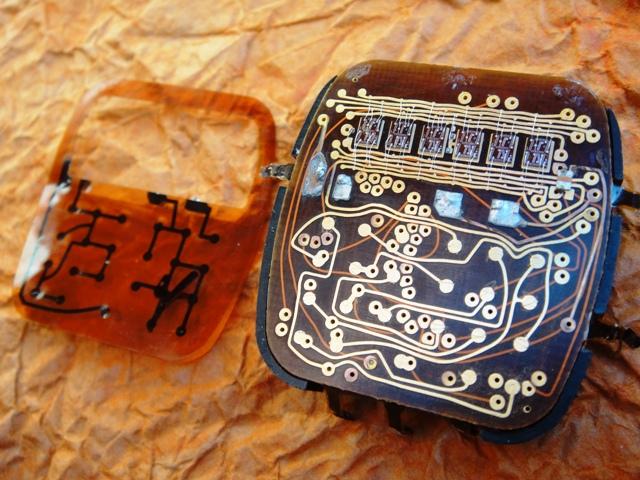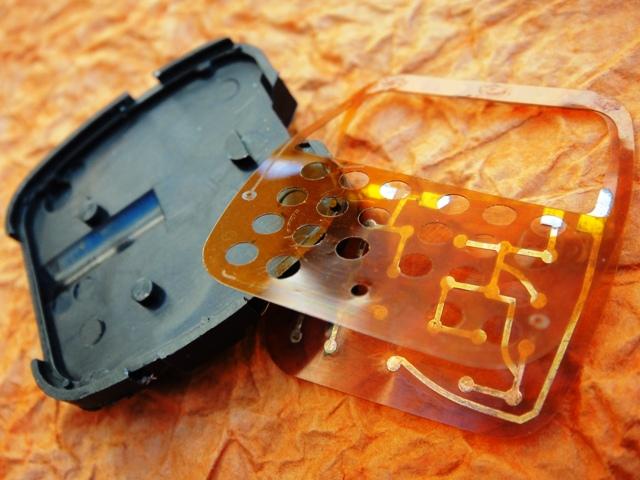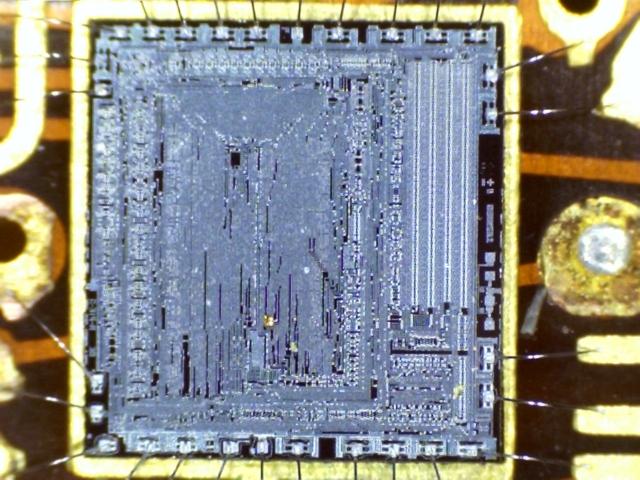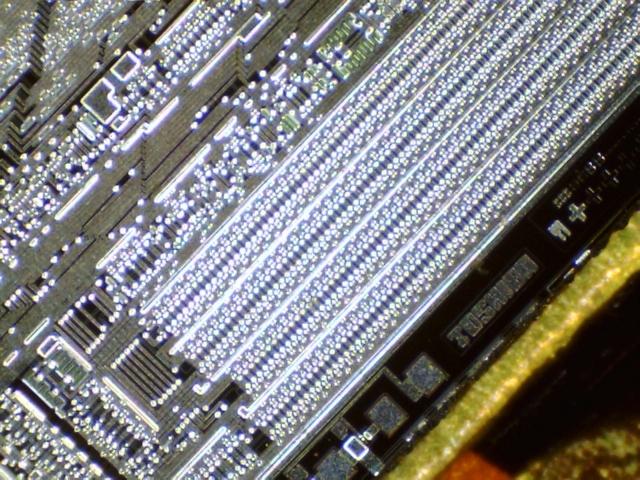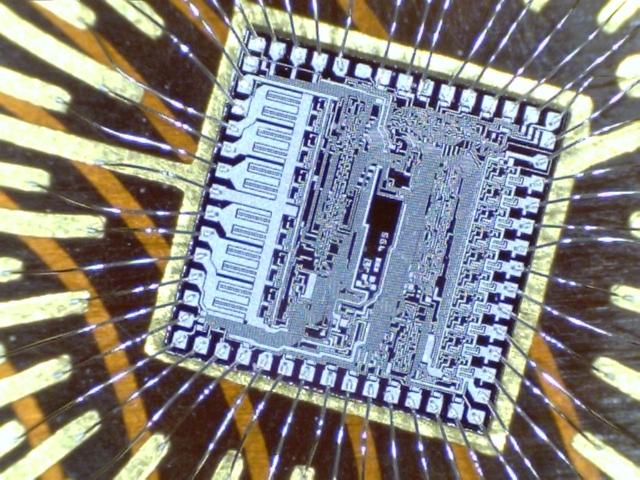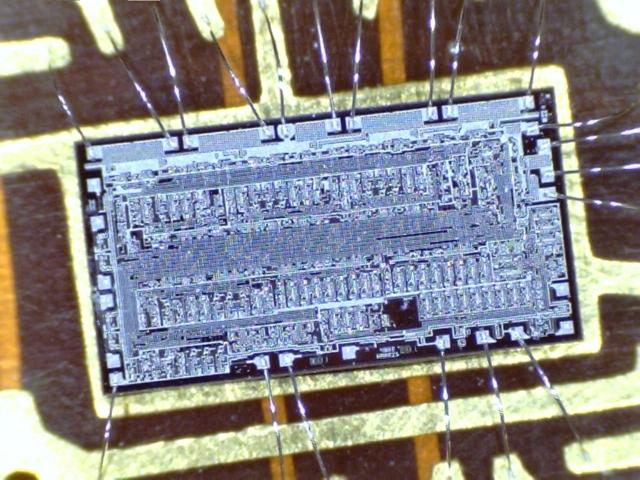PULSAR CALCULATOR TIME COMPUTER LED 1975
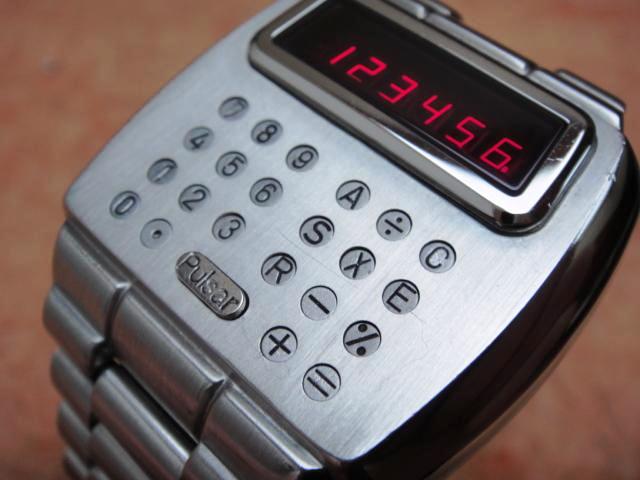 The "Calculator" is the first ever wristwatch calculator introduced by Pulsar in late 1975 just before Xmas time. The first "Limited edition" of 100 pieces was available in 18kt. solid gold for an enormous price of 3950$. Nevertheless it proved to be a huge market success so a few months later a more affordable stainless steel version was offered for 550$. The Calculator was targeted "For the man who had everything until just now...". Even USA's President Ford wanted this one for Xmas 1975 :-) but his wife said "No way". The first version featured a 901 module and in 1977 an improved 902 module was introduced with some rearranged buttons (R&S, =&C) and the flick-wrist function (inertial switch within the module). The watch had to be powered with four (!) 357 batteries although two are sufficient to display all features.
The "Calculator" is the first ever wristwatch calculator introduced by Pulsar in late 1975 just before Xmas time. The first "Limited edition" of 100 pieces was available in 18kt. solid gold for an enormous price of 3950$. Nevertheless it proved to be a huge market success so a few months later a more affordable stainless steel version was offered for 550$. The Calculator was targeted "For the man who had everything until just now...". Even USA's President Ford wanted this one for Xmas 1975 :-) but his wife said "No way". The first version featured a 901 module and in 1977 an improved 902 module was introduced with some rearranged buttons (R&S, =&C) and the flick-wrist function (inertial switch within the module). The watch had to be powered with four (!) 357 batteries although two are sufficient to display all features.
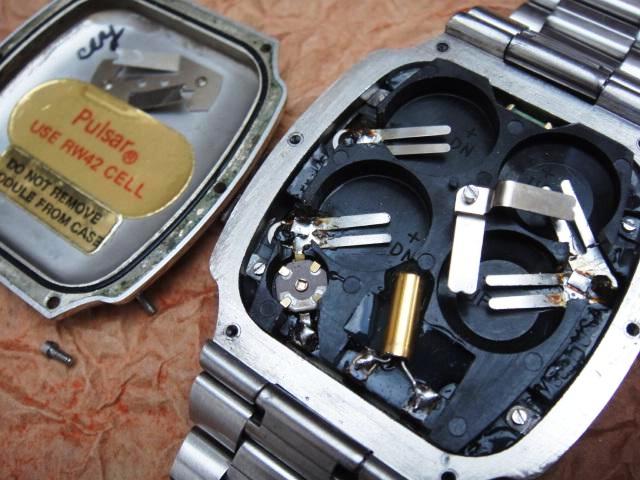 All calculations on the small buttons can be made by using a pen with stylus that was supplied in the box. The buttons are secured in the case with a rubber insulation sheet and once pressed they connect two conducting layers on the front pad with applied traces that are shorted to display time or function. Due to the complexity many of these watches are found as nonworking although some can be repaired. The caseback has a label warning not to remove the module but it is possible without any damage with some safety applied to the exposed display wirebonds. The watch might be classified as nonworking due to dirt or oxidation on the conducting pad. The first solution is to clean it with alcohol or a fibrebrush and check if the "Pulsar" button displays time and if the calculating function is activated by "0" (901) or "+" (902).
All calculations on the small buttons can be made by using a pen with stylus that was supplied in the box. The buttons are secured in the case with a rubber insulation sheet and once pressed they connect two conducting layers on the front pad with applied traces that are shorted to display time or function. Due to the complexity many of these watches are found as nonworking although some can be repaired. The caseback has a label warning not to remove the module but it is possible without any damage with some safety applied to the exposed display wirebonds. The watch might be classified as nonworking due to dirt or oxidation on the conducting pad. The first solution is to clean it with alcohol or a fibrebrush and check if the "Pulsar" button displays time and if the calculating function is activated by "0" (901) or "+" (902).
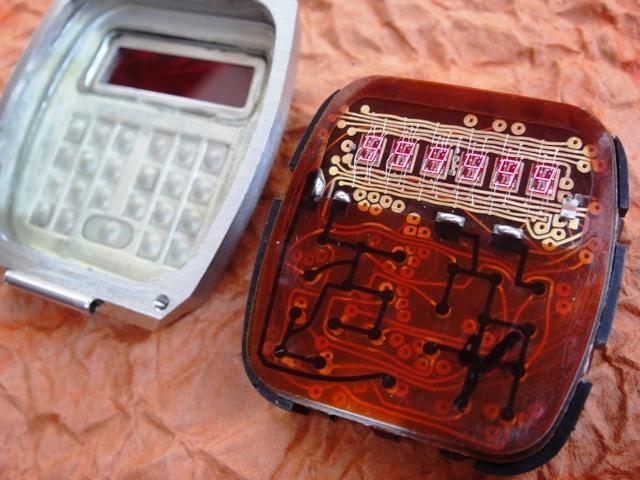 A last resort is to check the flick-wrist mode (902 only) and if it will light up then the issue is within the button pad and a bad connection somewhere on the traces. If neither function will appear then you can disassemble the module and tinker without any further risk. At this stage you can also improve the appearance of the watch case. The sides are polished to shine and the bottom requires a brushing pad (sanding-sponge). One parallel stroke on a sheet of 120 sand-paper will give the top part that original brushing finish but you need to remove the higher display section by un-gluing it from the case and remove all buttons. Note! Do not remove the glue with a hot-gun or in the oven! The red glass filter consists of two layers of transparent glass sandwiched with red glue which will melt in high temperature.
A last resort is to check the flick-wrist mode (902 only) and if it will light up then the issue is within the button pad and a bad connection somewhere on the traces. If neither function will appear then you can disassemble the module and tinker without any further risk. At this stage you can also improve the appearance of the watch case. The sides are polished to shine and the bottom requires a brushing pad (sanding-sponge). One parallel stroke on a sheet of 120 sand-paper will give the top part that original brushing finish but you need to remove the higher display section by un-gluing it from the case and remove all buttons. Note! Do not remove the glue with a hot-gun or in the oven! The red glass filter consists of two layers of transparent glass sandwiched with red glue which will melt in high temperature.
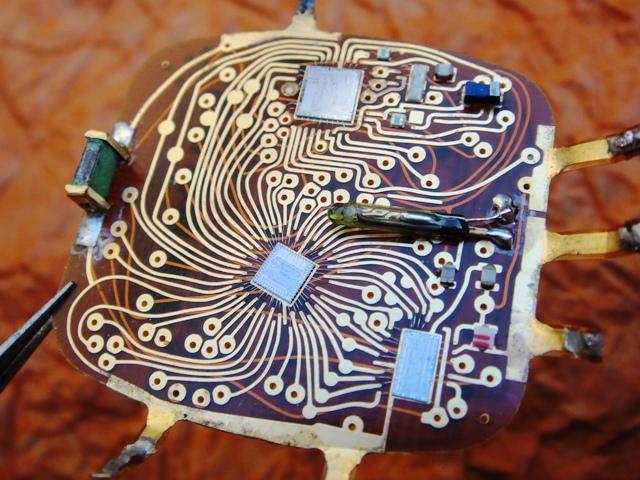 Pulsar was the first to market a wristwatch calculator but competitors soon joined the market. Today aside the Pulsar the most known and collectible LED calculators are the Hughes Aircraft Calculator (also marketed by CompuChron) and the most desired LED scientific calculator by Hewlett-Packard HP-01 from 1977 which was produced in a very limited amount. The most scarce LED calculator is the Uranus watch with the buttons located around the display. A late version of the Pulsar 902 Calculator nicknamed "Euro" was also made (shown above without bracelet) but it's not confirmed that this model was made exclusively for the European market... most of these however resurface in Western Europe. By 1975 Pulsar had most components made by various subcontractors so it's not surprising to find Toshiba and Harris microchips in the Calculator... shown below in 200x microscope mode.
Pulsar was the first to market a wristwatch calculator but competitors soon joined the market. Today aside the Pulsar the most known and collectible LED calculators are the Hughes Aircraft Calculator (also marketed by CompuChron) and the most desired LED scientific calculator by Hewlett-Packard HP-01 from 1977 which was produced in a very limited amount. The most scarce LED calculator is the Uranus watch with the buttons located around the display. A late version of the Pulsar 902 Calculator nicknamed "Euro" was also made (shown above without bracelet) but it's not confirmed that this model was made exclusively for the European market... most of these however resurface in Western Europe. By 1975 Pulsar had most components made by various subcontractors so it's not surprising to find Toshiba and Harris microchips in the Calculator... shown below in 200x microscope mode.
Keywords: pulsar led, pulsar calculator, time computer
Market value: 150-1200$ (model, condition, pen/stylus, box)

